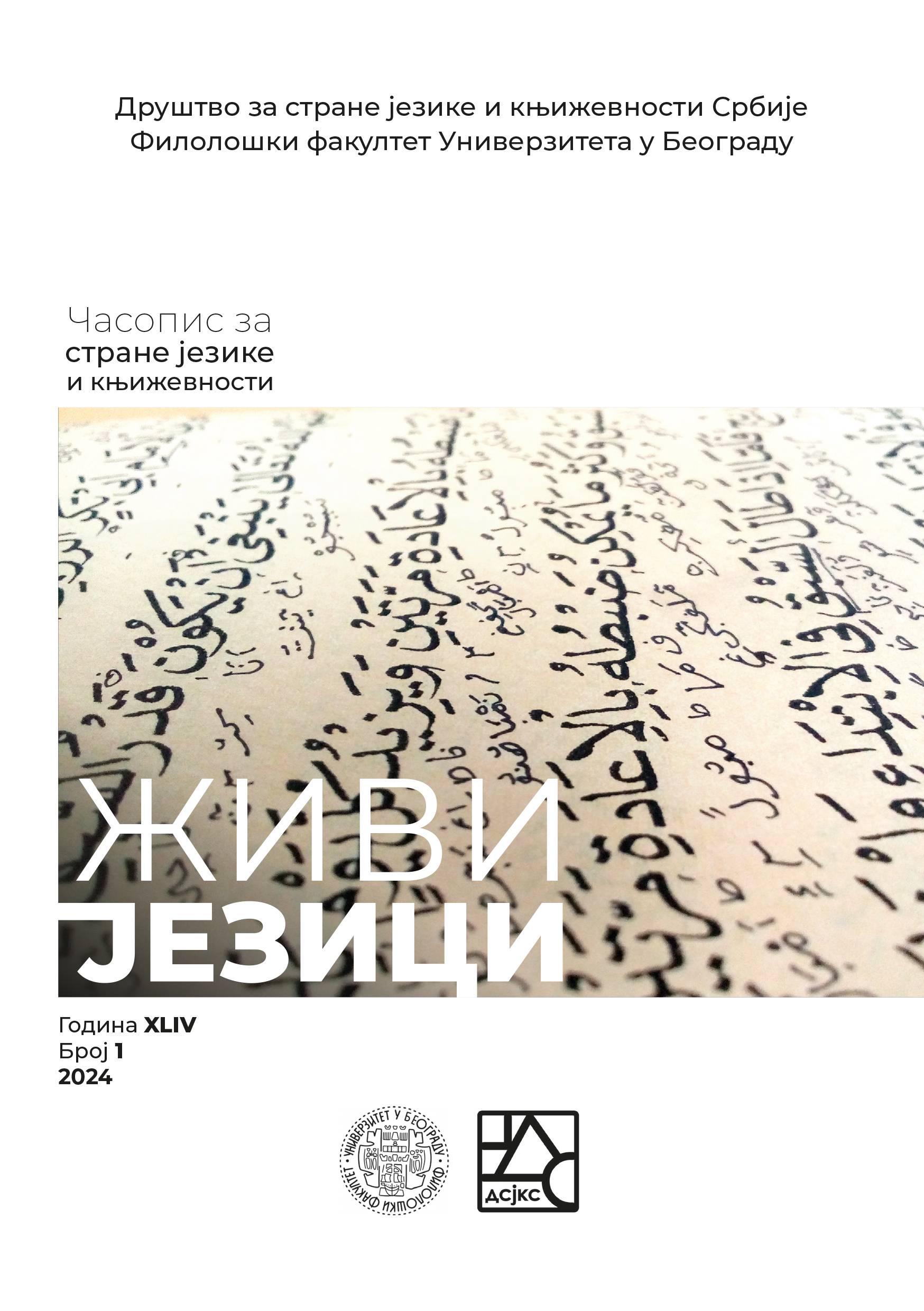MODALITY IN AERONAUTICAL RADIOTELEPHONY COMMUNICATIONS
DOI:
https://doi.org/10.18485/zivjez.2024.44.1.1Keywords:
modality, radiotelephony (RTF), phraseology, plain language, deontic modality, dynamic modalityAbstract
The language of radiotelephony (RTF) communication between pilots and air traffic controllers is a special variety of the English language, which consists of the prescribed phraseology, as a dominant communicative tool, and plain language. To ensure clear and unambiguous exchange of information, the requirements on the use of this language call for the greatest possible simplification of grammatical structures and lexis. The prescribed phraseology is characterised by markedly limited grammatical structures and vocabulary range and consequently significantly reduced modal component. Modality is more frequently detected in unusual and emergency situations, when the participants have to resort to plain language due to non-existence of adequate phraseology. The dominant modal component in the communication which relies on the prescribed phraseology only is the event modality, whereas in the communication which involves the use of plain language, apart from the deontic and dynamic modality, examples of epistemic modality can be found as well.
References
Ostin 1962: Austin, J.L., How to Do Things with Words. London: Oxford University Press.
Bajbi, Perkins i Paliuka 1994: Bybee, J., Perkins, R., & Pagliuca, W., The Evolution of Grammar. The University of Chicago Press.
Klark i Šefer 1989: Clark, H. H., & Schaefer, E. F., Contributing to Discourse. Cognitive Sciencev. 13, 259–294.
Kušing: 1995: S. Cushing, Pilot-Air Traffic Control Communications: It`s Not (Only) What You Say, It`s How You Say It. Flight Safety Digest, 1–10.
Gabrijelatos i Saramento 2006: Gabrielatos, C., & Saramento, S., Central Modals in an Aviation Corpus: Frequency and Distribution. Letras de Hoje. v.41 no 2, 215–240.
Grajs 1975: Grice, H., Logic and Conversation. Syntax and Semantics, Vol. 3, Speech Acts, 41–58.
Herasimenko i Muravska 2020: Herasymenko, L., & Muravska, S. (2020). Use of Modal Verbs in English Aviation Radiotelephony Discourse. Naukovi Zapisi Vipusk. DOI:https://10.36550/2522-4077.2020.187.23, 151–154.
Levinson 1983: Levinson, S. C., Pragmatics. Cambridge: Cambridge University Press.
Lajons 1977: Lyons, J., Semantics II. Cambridge: Cambridge University Press.
Mekgrat 2011: Mc Grath, M., Defining a Grammar of Radio Telephony and Emergencies. Aviation in Focus (Porto Alegre) v.2 n.1, 30–49.
Nagi 2019: Nagy, D., Pragmatism of Modal Verbs: Case Study of `ICAO` Requirements. International Conference RCIC`19 Redefining Community in Intercultural Context. Bucharest.
Palmer 1986: Palmer, F. R., Mood and Modality. CUP. U Trbojević-Milošević, I. (2004). Modalnost, sud, iskaz. Beograd: Filološki fakultet, Beograd.
Palmer 2001: Palmer, F. R., Mood and Modality. Cambridge: Cambridge University Press.
Pidlubna 2019: Pidlubna, O., Functional Peculiarities of Modal Verbs Usage in the Aviation English Radiotelephony Discourse. International Humanitarian University Herald Philology. DOI: 10.32841/2409-1154.2019.40.2.15.
Ragan 1997: Ragan, P. H., Aviation English: An Introduction. Journal of Aviation/Aerospace Education & Research, 7(2).
Rataj 1978: Rathay, W., Some aspects of modality as seen from a semantic point of view. Studia Anglica Posnaniensia, Vol.X, Poznan, 105–122. U Trbojević-Milošević, I. (2004).Modalnost, sud, iskaz. Beograd: Filološki fakultet, Beograd.
Svitser 1984: Sweetser, E., Semantic Structure and Semantic Change: A cognitive linguistic study of modality, perception, speech acts and logical relations, PhD dissertation, Berkley. U Trbojević-Milošević, I. (2004).Modalnost, sud, iskaz. Beograd: Filološki fakultet, Beograd.
Serl 1969: Searle, J. R., Speech Acts: An Essay in the Philosophy of Language. Cambridge: Cambridge University Press.
Serl 1975: Searle, J. R., A taxonomy of Illocutionary Acts. Language, mind and knowledge Volume 7, 344–369.
Tređidgo 1982: Tregidgo, P.S., Must and May: Demand and Permission. Lingua, 56, 75–92. U Trbojević-Milošević, I. (2004). Modalnost, sud, iskaz. Beograd: Filološki fakultet, Beograd.
Izvori
Aviation Safety Network 2022: Aviation Safety Network. Preuzeto sa: https://aviation-safety.net. https://reports.aviation-safety.net/2000/20000131-0_MD83_N963AS.pdf.
IKAO-4444 2007: ICAO Doc 4444 ATM/501.Air Traffic Management. ICAO.
IKAO-9432 2007: ICAO Doc 9432 AN925. Manual of Radiotelephony. ICAO.
IKAO-9835 2010: ICAO Doc 9835 AN453. Manual on the Implementation of ICAO Language Proficiency Requirements. ICAO.
NTSB 2010: NTSB. Accident Report AAR-10/03. Washington, D.C.: NTSB.
Downloads
Published
How to Cite
Issue
Section
License
Copyright (c) 2024 Maja Jevtović Šulejić

This work is licensed under a Creative Commons Attribution-NonCommercial-ShareAlike 4.0 International License.


